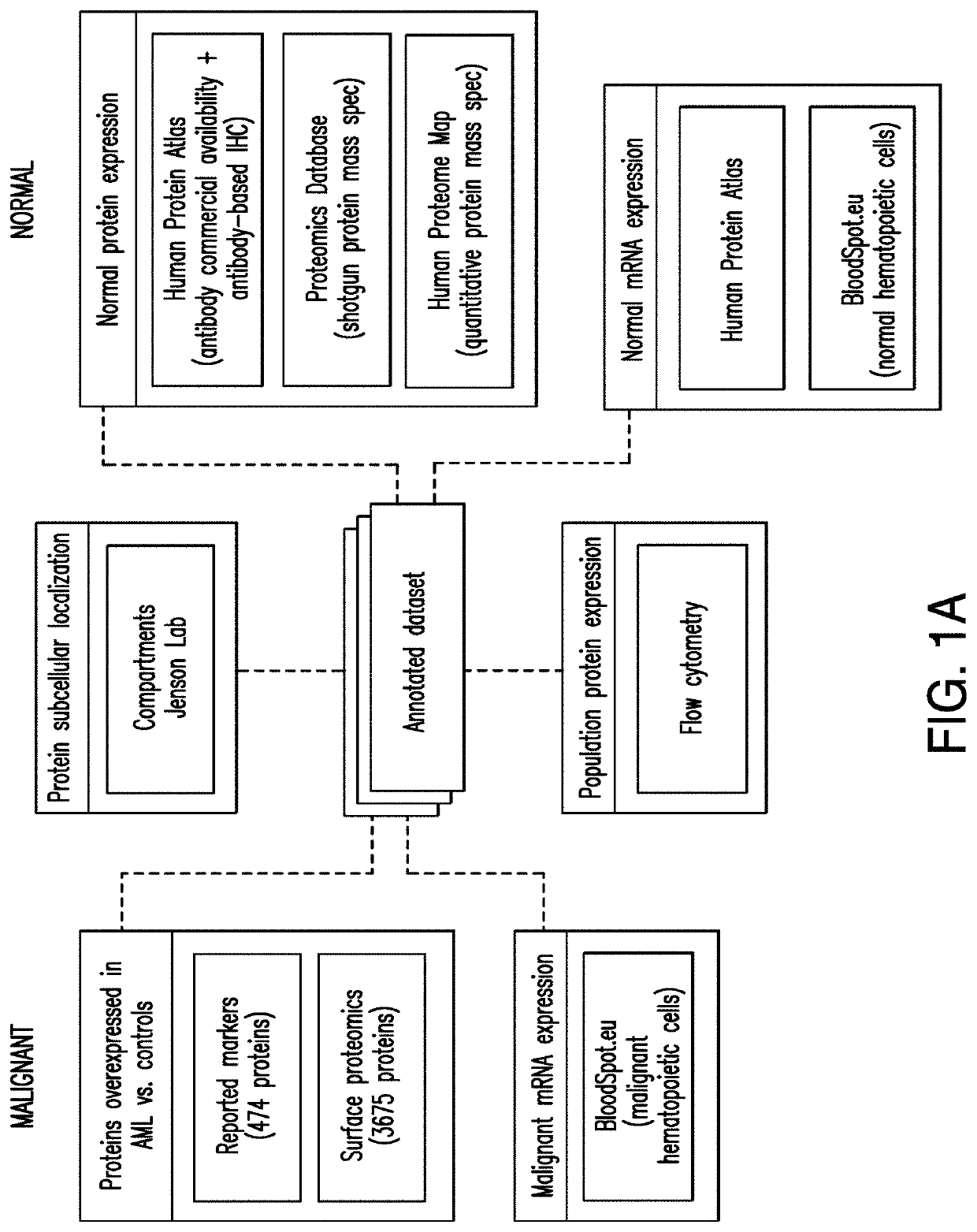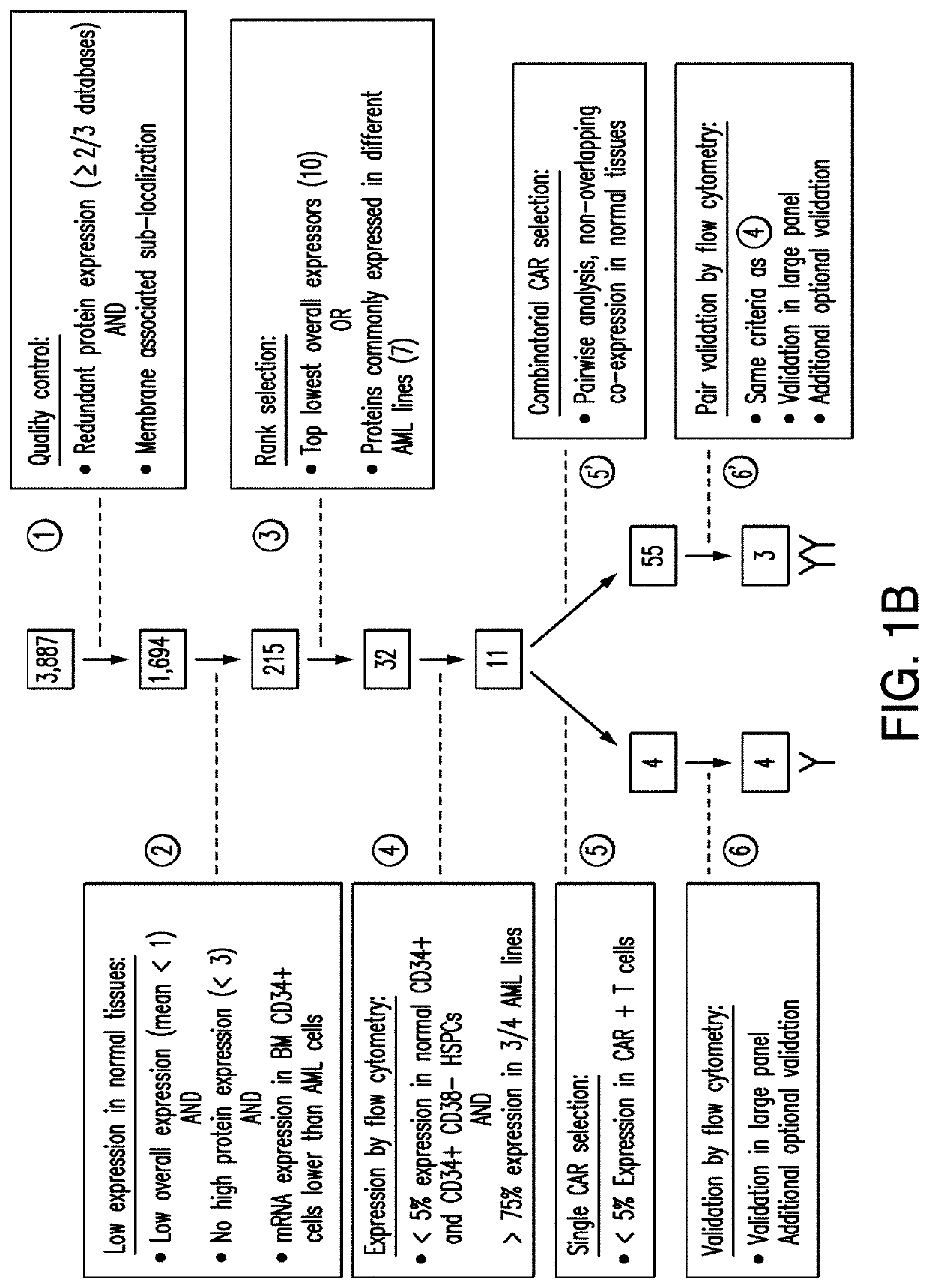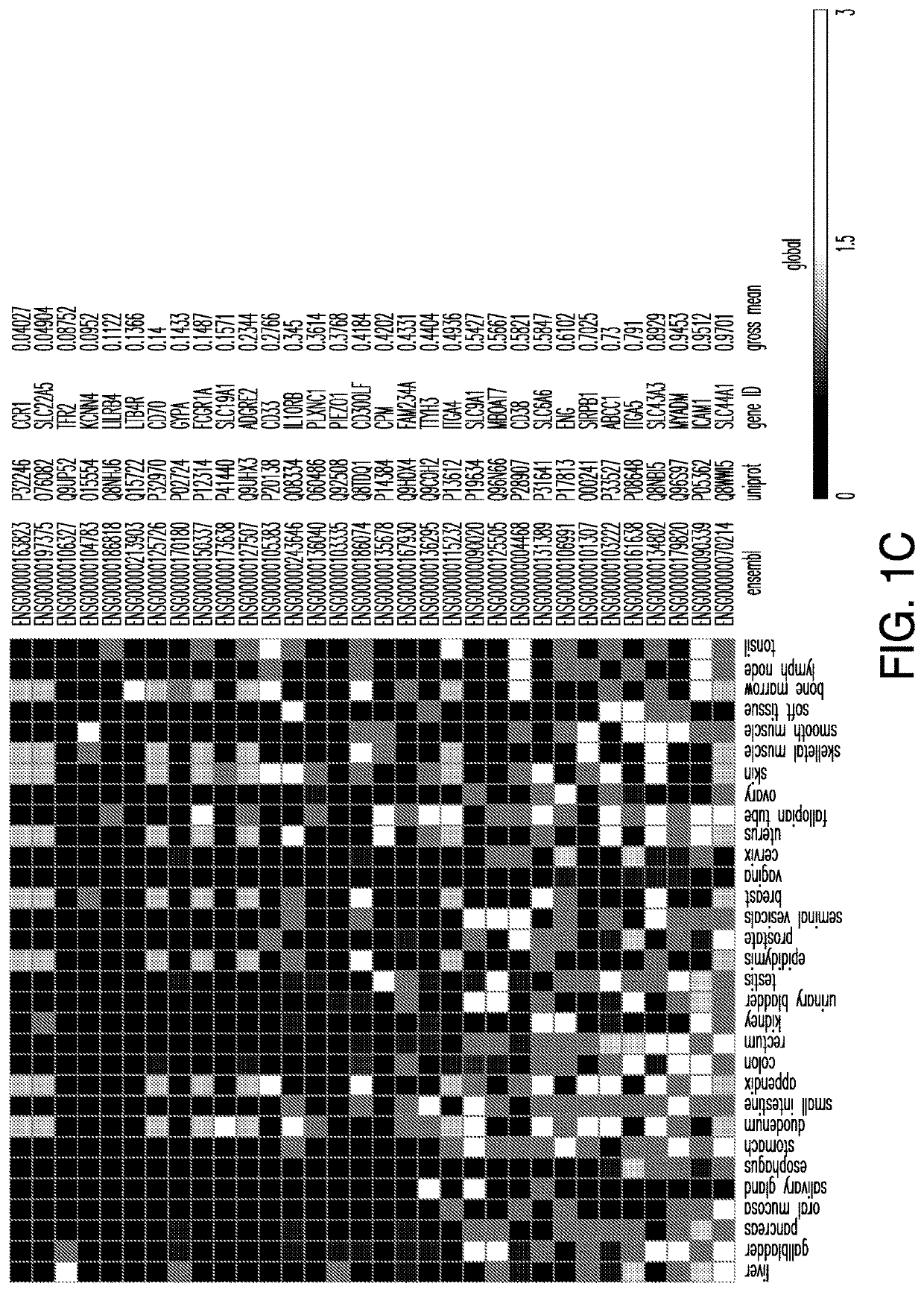Cancer antigen targets and uses thereof
a technology of antigen targets and cancer, applied in the field of cancer antigen targets, can solve the problem that the binding of only one target does not achieve a therapeutic
- Summary
- Abstract
- Description
- Claims
- Application Information
AI Technical Summary
Benefits of technology
Problems solved by technology
Method used
Image
Examples
example 1
d Analysis of the AML Cell Surfaceome Identifies CAR Targets Summary
[0318]Adoptive T cell therapies using chimeric antigen receptors (CARs) to redirect the specificity and function of T lymphocytes have demonstrated efficacy in patients with lymphoid malignancies, in particular acute lymphoblastic leukemia (ALL) (Sadelain, 2015). This therapeutic modality induces complete remissions in subjects with CD19+ malignancies for whom chemotherapies have led to drug resistance and tumor progression. “Cancer immunotherapy”, including CAR therapy, was proclaimed a scientific breakthrough in 2013 (Couzin-Frankel, 2013). The success of CD19 CAR therapy bodes well for tackling all hematological malignancies, including Acute Myeloid Leukemia (AML), which affects over one quarter million adults annually worldwide. However, the development of CAR therapy for AML is hampered by the lack of suitable targets.
[0319]The search for suitable CAR targets has been limited so far to comparisons of antigen ex...
example 2
[0491]To rapidly obtain two fully human high-quality single-chain fragments (scFvs) targeting LTB4R1 and EMR2, in-house next-generation, premade, fully human, phage display scFv libraries is first utilized. The advantages include phage stability, rapid production, the fact that intrinsic properties such as immunogenicity, affinity, specificity and stability of antibodies can be improved by various mutagenesis technologies. The antibody genes are expressed and the gene products displayed on the surface of filamentous bacteriophage as fusion proteins, thus creating a link between antibody phenotype and its encoded genotype (Pansri, BMC Biotechnol, 9:6, 2009; Farajnia, Immunopharmacol Immunotoxicol, 36:297-308, 2014).
example 3
[0492]To expand the validation cohort of the targets within primary AML patient samples, at least 50 samples, bearing frequently recurring genetic abnormalities, including DNMT3a mutation, are analyzed by flow cytometry.
[0493]Leukotriene B4 (LTB4), an eicosanoid derivative of arachidonic acid metabolism produced by the sequential action of 5-lipoxygenase and leukotriene A4-hydrolase, is a leukocyte chemoattractant30. LTB4 signals through two G protein-coupled seven-transmembrane domain receptors, LTB4 receptor (BLT1) and BLT2, the high- and low-affinity receptors, respectively (Yokomizo, Nature, 387:620-624, 1997; Yokomizo, J Exp Med, 192:421-432, 2000). BLT1 is a mediator of inflammation (Kim, J Exp Med, 203:829-835, 2006). In sharp contrast to BLT2, which is expressed ubiquitously, BLT1 is predominantly expressed in granulocytes. Yokota et al. used a GM-CSFbased tumor vaccine setting in BALB / c leukemia model and showed better primary and recall immune responses in the BLT1− / −mice ...
PUM
 Login to View More
Login to View More Abstract
Description
Claims
Application Information
 Login to View More
Login to View More - R&D
- Intellectual Property
- Life Sciences
- Materials
- Tech Scout
- Unparalleled Data Quality
- Higher Quality Content
- 60% Fewer Hallucinations
Browse by: Latest US Patents, China's latest patents, Technical Efficacy Thesaurus, Application Domain, Technology Topic, Popular Technical Reports.
© 2025 PatSnap. All rights reserved.Legal|Privacy policy|Modern Slavery Act Transparency Statement|Sitemap|About US| Contact US: help@patsnap.com



